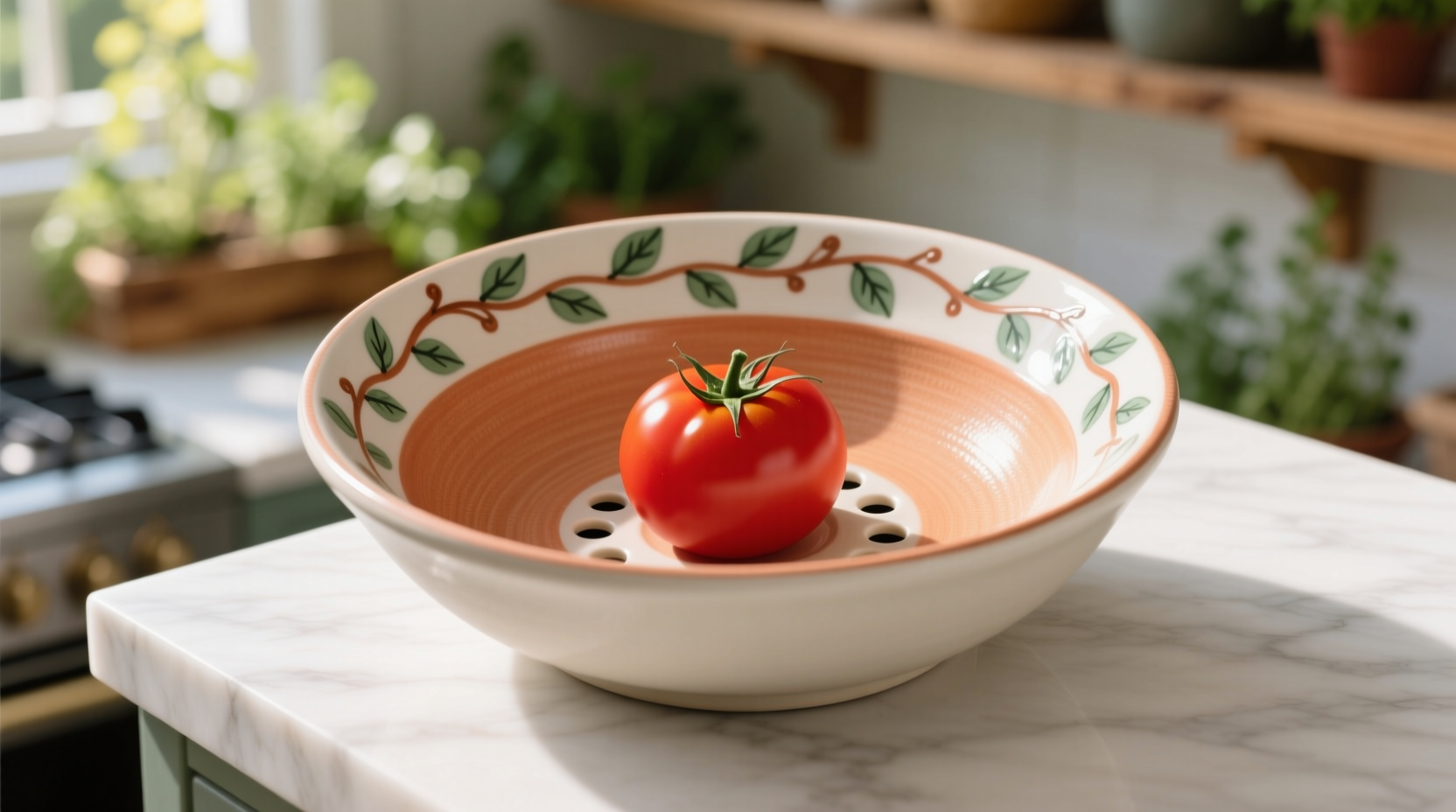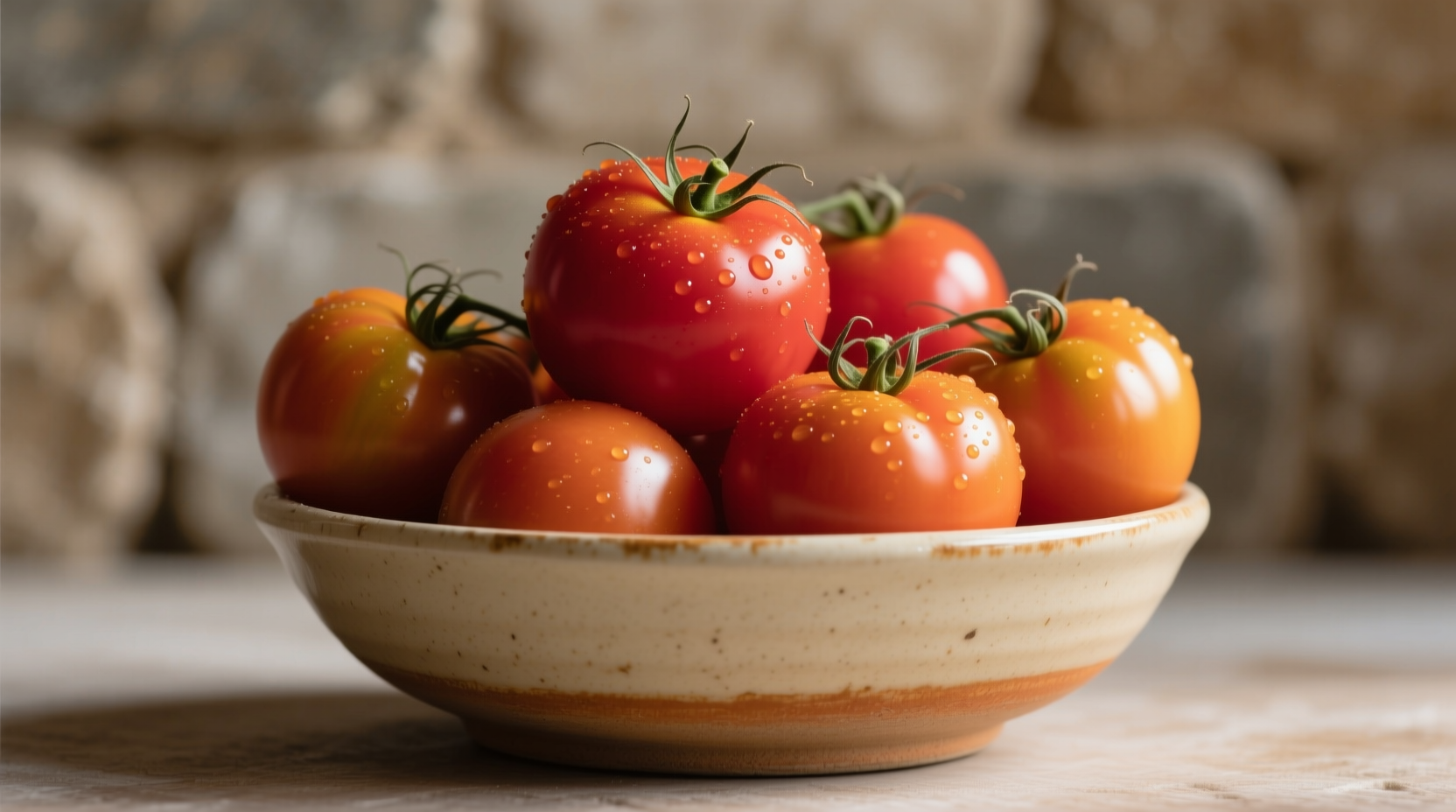Why Your Tomato Presentation Matters
Ever wonder why restaurant tomatoes look so vibrant while your home servings turn soggy? The secret often lies in using the right vessel. Tomato bowls solve the fundamental problem of tomato moisture management - those beautiful heirlooms release liquid that dilutes flavors and creates unappetizing pools on your plate.
Understanding the Tomato Bowl Difference
Unlike standard serving dishes, authentic tomato bowls incorporate strategic design elements specifically for tomato presentation. The key differentiator is the perforated base or elevated platform that allows excess liquid to drain away from the fruit while maintaining visual appeal.
| Feature | Tomato Bowl | Regular Serving Bowl |
|---|---|---|
| Base Design | Perforated or elevated | Flat, solid surface |
| Moisture Management | Drains excess liquid | Liquid pools under tomatoes |
| Flavor Preservation | Maintains freshness | Causes sogginess |
| Visual Presentation | Enhances appearance | Dulls vibrant colors |
Evolution of the Tomato Serving Tradition
The concept of specialized tomato presentation dates back to early 20th century European dining traditions. As tomatoes gained popularity beyond their initial medicinal uses, chefs recognized the need for proper presentation techniques.
According to culinary historians at the International Culinary Institute, the first dedicated tomato serving dishes appeared in French and Italian households around 1920. These early versions were often simple ceramic plates with raised centers. By the 1950s, purpose-built tomato bowls with drainage features became standard in professional kitchens.
Material Science Behind Effective Tomato Bowls
Not all tomato bowls perform equally. The material significantly impacts both functionality and food safety, especially important when serving acidic foods like tomatoes.
Glass and ceramic options provide non-reactive surfaces that won't alter tomato flavor. The FDA's guidelines on food-safe materials confirm that properly glazed ceramics create ideal surfaces for acidic foods. Metal bowls, particularly those containing reactive metals like aluminum, can cause flavor changes and potential health concerns when in prolonged contact with acidic ingredients.
When a Tomato Bowl Becomes Essential
While not necessary for every tomato application, specific scenarios demand this specialized dish:
- Cold tomato presentations - Caprese salads, tomato bruschetta, or chilled tomato soups benefit from proper drainage
- Longer service periods - Events where food sits for more than 20 minutes require moisture management
- Delicate heirloom varieties - These premium tomatoes release more liquid and need careful presentation
- Professional food photography - Photographers consistently use tomato bowls to maintain visual appeal
Food safety experts from the USDA note that proper drainage also helps maintain safe temperatures for perishable ingredients, reducing bacterial growth risks during extended service times.
Selecting Your Perfect Tomato Bowl
Choosing the right tomato bowl involves balancing several factors:
Size Considerations
Standard tomato bowls range from 6-10 inches in diameter. For individual servings, 6-7 inch bowls work best. Family-style presentations typically require 8-10 inch options. The CDC's food safety guidelines recommend avoiding overcrowding food in serving dishes to maintain proper temperatures.
Drainage Design
Look for bowls with either:
- Elevated platforms that lift tomatoes above collected liquid
- Strategic perforations that allow drainage without compromising stability
- Removable inserts for versatile serving options

Care and Maintenance Tips
Proper care extends your tomato bowl's lifespan and maintains food safety standards:
- Hand wash with mild detergent - dishwasher heat can damage delicate glazes
- Avoid abrasive cleaners that might scratch surfaces
- Store with protective padding between stacked pieces
- Check for chips or cracks regularly - damaged surfaces can harbor bacteria
Creative Applications Beyond Tomatoes
While designed for tomatoes, these versatile dishes excel with other moisture-prone foods:
- Fruit salads (especially melons and citrus)
- Cucumber salads and pickled vegetables
- Drained pasta salads before final dressing
- Marinated proteins before cooking
Professional chefs often repurpose tomato bowls for tasks requiring temporary liquid separation without complete draining.











 浙公网安备
33010002000092号
浙公网安备
33010002000092号 浙B2-20120091-4
浙B2-20120091-4